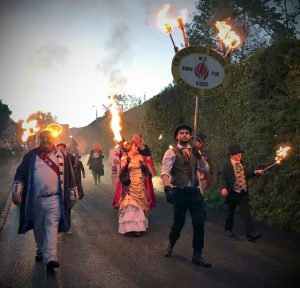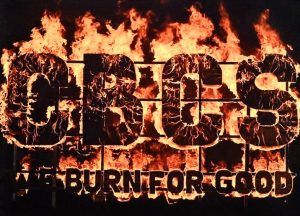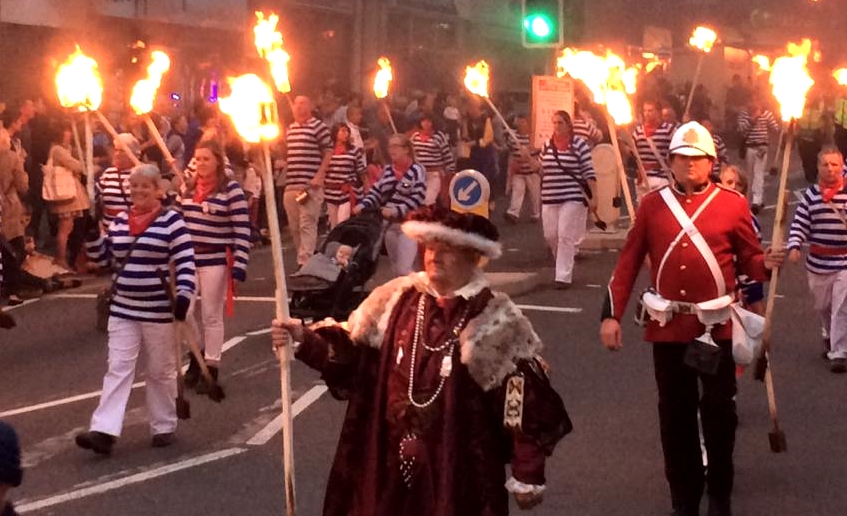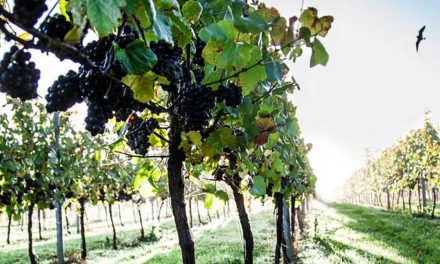Darker evenings, morning mists, and leaves turning golden brown herald the annual changing of the seasons as warm summer days give way to autumn. Of course in East Sussex they also mean another thing – Bonfire Season is about to begin.
While many towns and cities up and down the country traditionally celebrate Bonfire Night in early November, in Sussex there’s an unmatched enthusiasm for the festivities.
Costumes and torches
Many of our towns and villages have Bonfire Societies and from early September through to the end of November there will be fund-raising costumed torchlit processions, bonfires and fireworks across the county. Each event is different but most societies use the occasion to fund-raise for local community groups. Pipers, drummers, marching bands and dancers will all join in.

Many of the societies dress up in period costumes or smugglers’ outfits. So you might see Henry VIII and his Tudor court sharing the same procession as French revolutionaries or native Americans. And in some towns the procession is joined by carnival floats from local organisations.
Historical origins
As with any tradition that goes back into the mists of time, the origins of Sussex Bonfire is not simple. While the modern day celebrations focus on Guy Fawkes’ failed attempt to blow up Parliament in 1605 and also the deaths of the protestant martyrs during Mary Tudor’s reign, it’s thought the traditions pre-date even these moments in history.
One theory is that the Sussex Bonfire tradition began in times when rural farm workers had little or no wages during the autumn and winter months. They would go from house to house asking the residents for food or money. Because what they were doing was essentially begging, it was illegal. To avoid repercussions they would disguise themselves by dressing up in costume or using charcoal to blacken their faces.
The biggest event in the Sussex Bonfire calendar is always in Lewes on 5 November where the town marks Guy Fawkes Night, but also commemorates the 17 Protestant martyrs burned at the stake for their faith in the 16th century.
Burning effigies
In the Lewes event there are seven societies who put on six separate parades with intricate bonfire effigies and firework displays throughout the town. They work for weeks on the satirical effigies whose identities are kept a closely guarded secret. In recent years, Donald Trump, Osama Bin Laden, Vladimir Putin, Kim Jong-un and Boris Johnson are among those who have been immortalised in model form then put to the flames.
Bonfire societies from all around Sussex join in with a march through the streets and as well as the torchlit processions, 17 burning crosses symbolise the lives of those who died at the stake.

But while it may be the largest event you don’t have to go to Lewes to enjoy the Sussex Bonfire tradition. The local events have become a perfect opportunity for communities to get together, celebrate and raise money for local causes. This year the calendar is:
September
7th Uckfield
14th Crowborough
21st Mayfield
28th Burgess Hill
October
5th Eastbourne/Rotherfield /Northiam
12th Ninfield
19th Hastings/Hailsham/Seaford
25th Isfield & Little Horsted (Friday)
26th Ewhurst & Staple Cross /Littlehampton/Firle / Heathfield
November
2nd Newick /Battle /Edenbridge
3rd Robinhood (Icklesham) (Sunday)
5th Lewes /Lindfield
9th East Hoathly & Halland /Chailey
9th South Heighton /Rye
16th Robertsbridge /Neville /Barcombe
23rd Hawkhurst





Another factor in Sussex bonfires might be the beacon network in Kent and Sussex in 1803-1806 when an invasion by Napoleon was anticipated. The network was never needed, but was tested by false alarms, and the organisation was rigorously maintained. It was fixed in memory. I take on board Guy Fawkes and tar barrelling and other traditions, but the beacon system had a strong influence. People now think that jubilee and coronation bonfires were inspired by the Armada but the beacons manned for then were barely used. In fact the inspiration was Lord Macaulay’s Armada fragment, which had hilltop bonfires relaying the message, not at all accurate. He may have been inspired by stories of the Napoleonic bonfires. I have written about this in a recent book “Hilltop Bonfires – marking Royal events” Tom Welsh on Amazon KDP which, while primarily on jubilee and coronation bonfires, has a chapter of the Napoleonic beacons and part chapters on Sussex tar barrelling and bonfire clubs.